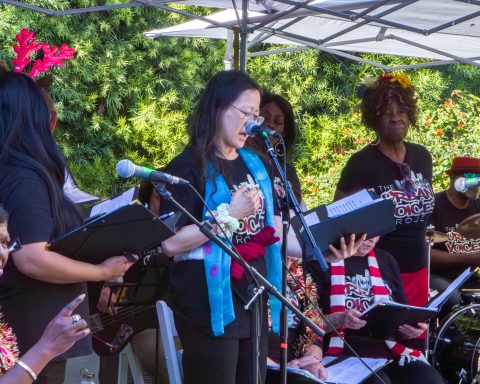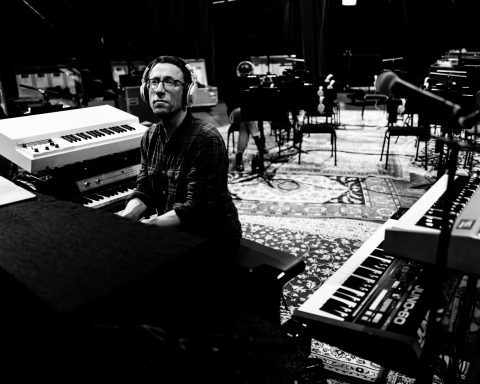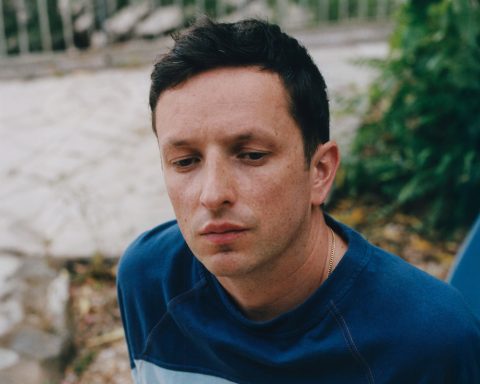From “Blowin’ in the Wind” by Bob Dylan to Moby’s “Whispering Wind” and countless other songs, the element of air factors significantly into the canon of popular music. Evan Shornstein, aka Photay, approaches the concept of wind through a more abstract lens. Hailing from New York’s Hudson Valley and currently residing in Los Angeles, Photay creates organic, intuitive soundscapes that evoke the invisible weather in our lives—emotional, intellectual, and literal. His latest record, Windswept, uses the elemental nature of the wind for a series of aural mediations that evoke new age, IDM, and even jazz improvisation. The artist opens up about his collaborators, the weather, and how location influences art.
From NY to L.A.
Tell us about how growing up in the Hudson Valley influenced your early musical life.
In retrospect, growing up in the Hudson Valley was amazing, but I was pretty antsy to go to New York City and experience a music scene I was aligned with. But being in the forest up there and the Catskill Mountains influenced my music and tastes. And there was a lot of music history in Woodstock, which seeped in. I started playing in punk bands, and even though it wasn’t like the electronic stuff I was into, there was a general, open-minded spirit to the arts.
What brought you to L.A.?
Music and love. I went to college right outside of Manhattan, so I was there and then in the city for four to five years. Then, I went back to the Catskills and, finally, L.A.
Spirit of Collaboration
You’ve worked with a slew of collaborations over the years, including saxophonist Randal Fisher. How did they influence this release?
In the last couple of years, I’ve had more and more musical collaborators in L.A., namely Carlos Niño and his entire community and my partner, Celia Hollander. I was really intrigued by the spirit of collaboration in Los Angeles, specifically with Carlos. I played with jazz musicians and collaborators and was like, “Wow, people just don’t seem to be judging if that’s electronic and this is acoustic.” It’s more about getting together and trying to make something.
Randal is one of my favorite collaborators and someone who’s helped me embrace improvising—going into shows with no plan. On Windswept, there are many excerpts from a very raw session I did with him and Carlos. It’s two mics, a big kind of room sound. We got this balance of super raw improvised room recording mixed with production layers on top. It feels closer to my own voice, a perfect balance of the improvised spirit and the studio.
"We got this balance of super raw improvised room recording mixed with production layers on top."
Listen to the Wind
How did the overarching theme of the wind come about?
I have a general fascination with the weather. My happiest place is in snowstorms. I’m always interested when the weather stops us. It makes us understand our vulnerability to the elements when we’re too caught up in our lives, like the logistics of our lives.
On my record from 2017, Onism, there’s a piece called “Storm.” I started it during a storm, and the weather was very ominous. As I started working on it, I decided I would only work on this track when the weather was foreboding.
How did the Windswept sessions begin?
I started with “Derecho” in April of 2020, and obviously, there was everything that was going on at the time. The winds were intense where I was, and I found this a huge source of inspiration. The music, to me, is kind of just like giving that a voice or, no pun intended, letting it flow through just like a current. It’s something I am receiving.

Running with a Recording
What was your kind of primary recording setup?
I had been getting deeper into analog gear, but I remember making that track; I had a minimal setup. I was working with a very simple kind of mallet-based patch in Ableton I stumbled upon. I thought, “Damn, that might not be the most impressive synth, but it didn’t sound like anything I had heard for a while. And so, I just ran with that.”
Was there any extended recording period, or did you build tracks over time?
I had a couple of fragmented periods of writing. Then, I got into many collaborations coming out of the pandemic and put some of this aside. I was thrilled to be embracing improvisation and producing. Summer of 2023, I was like, “It’s now or never.” I like letting things sit for a while and then coming back to them asking, “Do I still like this?” Does it still feel relevant, or is this just like an impulse of something I’m into for a week?
"I'll use the SP-404 for the more experimental shows. If I'm doing a more improvised show, I kind of leave it to chance."
Bringing it to Live
With all your various approaches and collaborations, how do you approach your live show?
For my upcoming tour, I’m doing my best to represent it as a solo performer. So, I’m currently in the midst of bringing it to life in a slightly different way—a little reimagined and flipped on its head. Depending on the city, I want to try to invite friends who are improvisers and wind instrumentalists to join me for a portion of the set.
When I’m playing with other people, sometimes I won’t have a laptop and I’ll use the SP-404 for the more experimental shows. If I’m doing a more improvised show, I kind of leave it to chance. I have so many samples on there now. Usually, the one I plan to use doesn’t work. But then some random sample where I forgot what’s on this bank, I’ll slowly fade it in, and I’m like, “Yeah.”
"I want to try making music in another country, maybe a place like Japan, where the collective feeling is just different."
Environmental Influence
Have you considered going to places with intense natural phenomena and trying to see what that brings out of you musically?
I’m interested in going further with it. I once rented a circular house in the Adirondacks in peak autumn. So, it was like such a vibey environment. And to my surprise, I had so much trouble being inside, working on music. It was so beautiful. I need to be somewhere more shut in. But I took a ton of photos, recorded a lot of sounds, and made quite a bit of music after the trip.
I’m into experimenting with environments. I want to get better at going to a place to collect sounds or do research. That said, I still think there’s something to it. I want to try making music in another country, maybe a place like Japan, where the collective feeling is just different.







